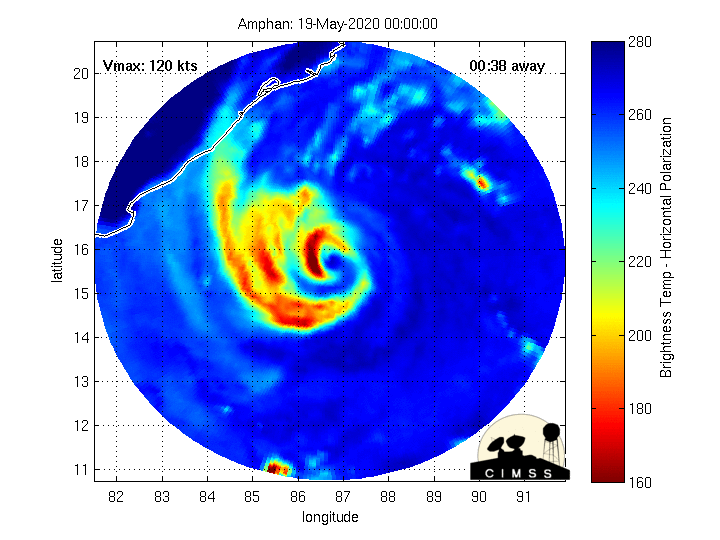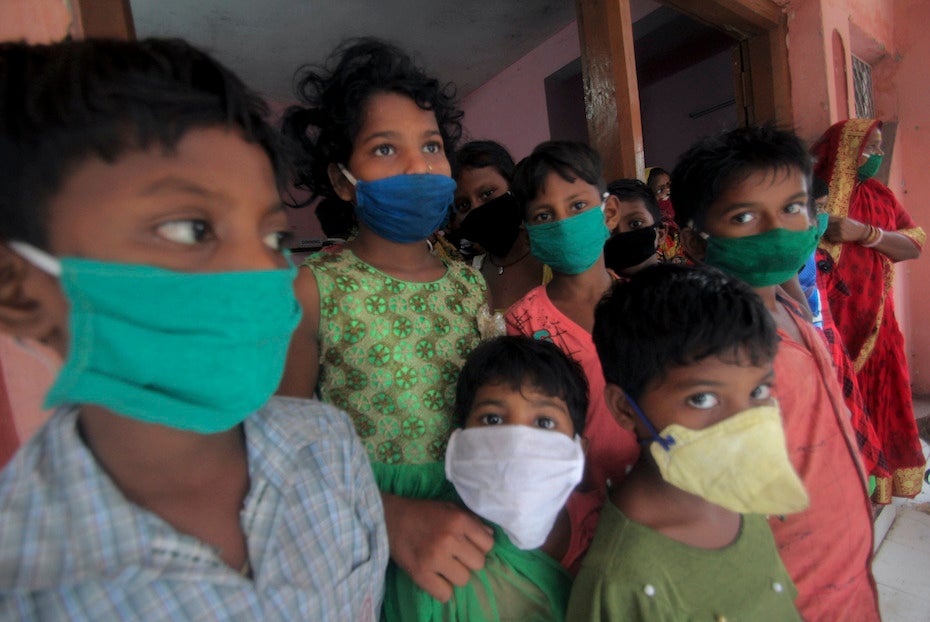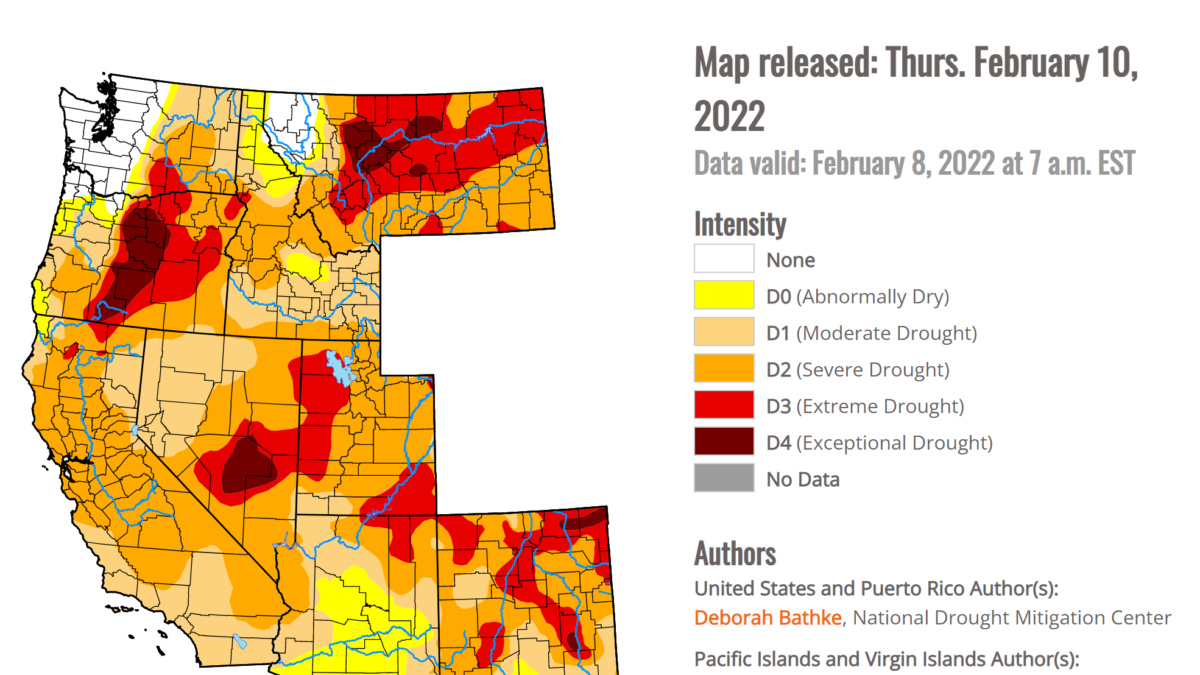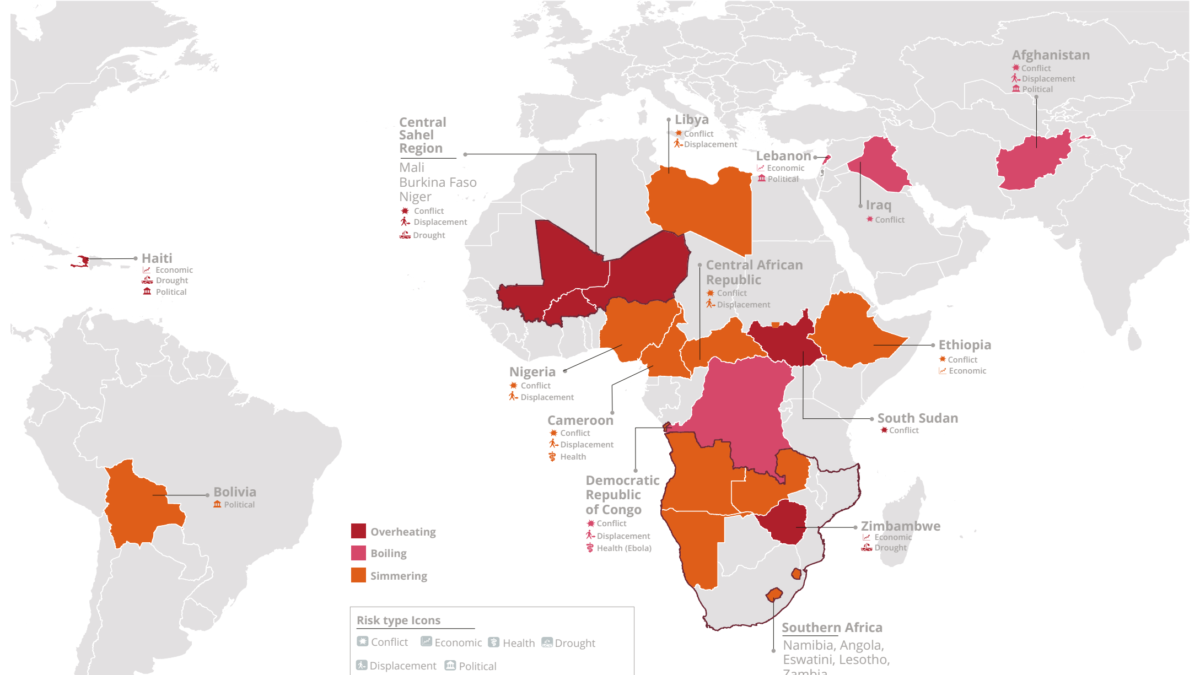Cyclone Amphan, most powerful storm on record in Bay of Bengal, poses extreme storm surge danger for eastern India, Bangladesh – Evacuations slowed by virus
By Andrew Freedman and Joanna Slater
19 May 2020
(The Washington Post) – Category 3 Tropical Cyclone Amphan is barreling northward toward the mouth of the Bay of Bengal on Tuesday and is forecast to make landfall in West Bengal, India, just south of Kolkata, on Wednesday. The storm is prompting officials in the states of Odisha and West Bengal, as well as in neighboring Bangladesh, to try to evacuate 3 million people out of harm’s way, given that this region is among the most vulnerable parts of the world to storm-surge flooding.
Both India and Bangladesh have made great strides in recent years with evacuations and bringing vulnerable residents to storm shelters, but this year those efforts are complicated by the coronavirus pandemic, which is making many residents fearful of going to confined spaces.
The storm had been a Category 5 monster on Monday, setting a record for the strongest such storm on record in that part of the world, but even nature’s most intense storms are surprisingly delicate. Strong winds carrying relatively dry air surrounding the storm have slipped into the core of Amphan (pronounced “UM-PHUN”), disrupting the inner ring of thunderstorms known as the eyewall, which contains the storm’s strongest winds and heaviest rains. […]

Water is a tropical cyclone’s greatest killer, both from storm surge and inland flooding due to heavy rainfall. The Indian Meteorological Department, which is issuing warnings for Cyclone Amphan, is predicting a storm surge of about 13 to 16 feet (4 to 5 meters) above astronomical tide, which it says “is likely to inundate low-lying areas of south and north 24 Parganas and about 10 to 13 feet (3 to 4 meters) over the low-lying areas of East Medinipur District of West Bengal during the time of landfall.” […]
Like many powerful storms in recent years, Tropical Cyclone Amphan underwent a period of rapid intensification Sunday night, feasting upon the warm waters of the Bay of Bengal and the absence of wind shear that could have interfered with its circulation, as well as abundant moisture surrounding the storm.
Based on data from the typhoon warning center, Cyclone Amphan intensified by 110 mph in just 36 hours. “That would certainly put it in a rare class of [rapid intensification] events globally,” said meteorologist Alex Lamers via Twitter. It also jumped in intensity from a Category 1 storm to a Category 5 monster in just 24 hours, according to Bob Henson of Weather Underground. [more]
Cyclone Amphan poses extreme storm surge danger for eastern India, Bangladesh

Super cyclone Amphan: evacuations in India and Bangladesh slowed by virus
19 May 2020 (The Guardian) – The Bay of Bengal’s fiercest storm this century – super cyclone Amphan – was bearing down on millions of people in eastern India and Bangladesh on Wednesday, with forecasts of a potentially devastating and deadly storm surge.
Authorities have scrambled to stage mass evacuations away from the path of Super Cyclone Amphan, which is only the second “super cyclone” to form in the north-eastern Indian Ocean since records began.
But their efforts have been hampered by the need to follow strict precautions to prevent the spread of the coronavirus pandemic, with infection numbers still soaring in both countries.
Many thousands of migrant workers are on the roads trying to get home from big cities after a nationwide lockdown destroyed their livelihoods.

Out at sea the vast weather system visible from space has winds of up to 240 km/h (150mph), the equivalent of a category-four hurricane. It is expected to ease slightly before crossing the coasts of West Bengal and neighbouring Bangladesh but could still be strong enough to “cause large-scale and extensive damage”, said the head of India’s weather office Mrutyunjay Mohapatra.
The Indian weather department forecast a storm surge of 10ft to 16-foot (3-5m)waves – as high as a two-storey house – that could swamp mud dwellings along the coast, uproot communication towers and inundate roads and rail tracks. […]
Bangladesh authorities fear Amphan will be the most powerful storm since Cyclone Sidr devastated the country in 2007, killing about 3,500 people and causing billions of dollars in damage.

The country has been working to bring 2.2 million people to safety, while West Bengal was relocating 300,000 others.
The Catholic Relief Services (CRS) aid group said people faced “an impossible choice” of braving the cyclone by staying put, or risking coronavirus infection in a shelter. […]
“Heavy rains, flooding [and] the destruction of homes and farmland, will increase the likelihood of the virus spreading, particularly in densely populated areas like the refugee camps in Cox’s Bazar,” ActionAid said.
“It will also undoubtedly increase the number of lives and livelihoods already lost to this pandemic.” [more]
Super cyclone Amphan: evacuations in India and Bangladesh slowed by virus



